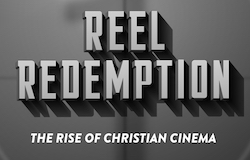 No, Roland Emmerich, you may not have 250 million dollars.
No, Roland Emmerich, you may not have 250 million dollars.
This November’s offering of disaster-movie-maker Roland Emmerich’s most recent disaster movie cost $250 million. This, my friends, is ridiculous. That’s $100 million an hour. To break it down further, every second of 2012 cost about $280,000. Can this possibly be worth it? Is there any way that this movie can justify spending so much money?
Let’s look at the campaign leading up to 2012. For months now (especially if you live in LA), you’ve been seeing posters, bench ads, billboards, all sorts of publicity for the movie. All of it has one thing on the poster – the number 2012. That’s it. The marketing campaign is based on the number 2012. Maybe a sleek minimalist concept to make it fit in with late fall’s Oscar contenders, but let’s take a look at the trailers. They contain almost nothing but disaster scenes. We see nothing but giant waves destroying buildings, monuments, and highways, cars being tossed from side to side, and planes crashing into the ground.
Now after you watch the trailer, what would you think the movie’s about? The world ending, yes. But what else? What’s the plot? What is the story, who are the characters, why does it all matter? There is nothing in the advertising campaign of 2012 to give us any idea of the actual movie, besides that it has lots of very, very expensive disaster scenes. And how do these scenes fit into the story? Lets think about it. We see scenes of destruction in Washington DC, LA, Rome, London, Rio de Janeiro, the Himalayas; the list goes on. Are we to believe that every one of these places has people that are important characters in the movie? Are we to believe that the movie has a good, story or theme based reason to show us destruction in these places?
A good movie comes up with a story and uses plot point to move that story along. What 2012 does is take a plot point and throw a story around it. There’s no way that we need to see the destruction in all these exotic locales. It’s just an excuse to throw in ridiculous special effects and mock ironic scenes (Emmerich has a penchant for showing the world’s most famous monuments being destroyed in fantastic ways – the toppling of the Jesus statue over Rio de Janeiro is a particularly stupid one). It’s a huge two-and-a-half hour gimmick. And it’s not even a new idea. Roland Emmerich has done this before with Day After Tomorrow and Independence Day. It’s not a new addition to the “disaster movie” genre, it’s just the same movie all over again with a different impetus. Is this fair to viewers? Should we be expected to watch a movie with almost two hours of destruction that we’ve already seen?
Yet the trailer only showcases the destruction, and the posters only tell us the name. They’re not even hyping the actors in the movie. John Cusack is playing second billing to “disaster.” Apparently Woody Harrelson’s in it, but there’s nothing telling us anything about that. There is a reason for all this – the makers of 2012 are holding their cards very close to their chests because they know that the movie is terrible. They know that there is nothing in the story, the character, the idea, the themes; nothing anywhere that makes this a redeeming piece of cinema. But they don’t care. They still want you to see it, because they’ve got to make that money back – that 250 million dollars.
Is this what film has become? Filmmakers like this have taken an art form and turned it into some dilapidated industry where they spend piles of money trying to trick audiences to go see something they will not enjoy. Like the three-card monte tricksters of old, they want you to pay them in hopes of getting something they have no intention of delivering. How much money could it really take to make a good movie? Let’s look no further than Paranormal Activity, still flying high at the box office. That’s a great concept and an enjoyable movie. But Roland Emmerich is allowed to spend Paranormal Activity’s entire budget 20 times every second. Does that make any sense? If a quality movie can easily be made for less that $10 million, why are studios still spending so much?
This is a call to both filmmakers and audiences. We can make great films without spending a king’s ransom. Let’s look for quality instead of proven tactics. The age of the blockbuster has been in a stunted state of growth for nearly 20 years. Producers complain that things are shabby at the box office, but only offer pallid regurgitations of what has worked in the past – more sequels, more remakes, more TV shows gone to the silver screen. Time has come for filmmakers to rise to the occasion and make something new, something great, something that defies convention. The cinema is an industry that is pleading for a few brave souls to give it some new life.
And audiences have a responsibility to stop seeing the same old schlock because they need something to do on a Friday night. If people keep paying for bloated over-budget blockbuster clones, producers will keep making them. Like a toddler with a bad habit, if you encourage him, he’ll never stop. Producers can’t be more discerning unless they believe that their audiences will be. And why can’t we? If you know that 2012 is going to be the same movie that you’ve seen Roland Emmerich make twice already, you should stay home. If you want great cinema to survive, you cannot patronize bad cinema.
To be clear – this isn’t a review. I haven’t seen 2012. I haven’t seen it, and I’m telling everyone I know not to see it. I’m sure that the word will spread eventually that it isn’t worth seeing, but by that time, they might already have the money, and we can’t let that happen. The producers desperately want to make the top of the box office in that opening weekend, and if they don’t get it, that’ll send a message. The advertising campaign is all designed so that you don’t know you’re wasting your money until it’s too late. And then they don’t care. They’ll start taking that money and making a new, terrible, waste of a movie.
The people have the power. If the product is bad, don’t buy it. If Roland Emmerich wants to destroy the world again, he shouldn’t be allowed to have $250 million to do it. If 2012 fails miserably, maybe someone will get the message.
 “For everything that was written in the past was written to teach us, so that through endurance and the encouragement of the Scriptures we might have hope.”
“For everything that was written in the past was written to teach us, so that through endurance and the encouragement of the Scriptures we might have hope.”










